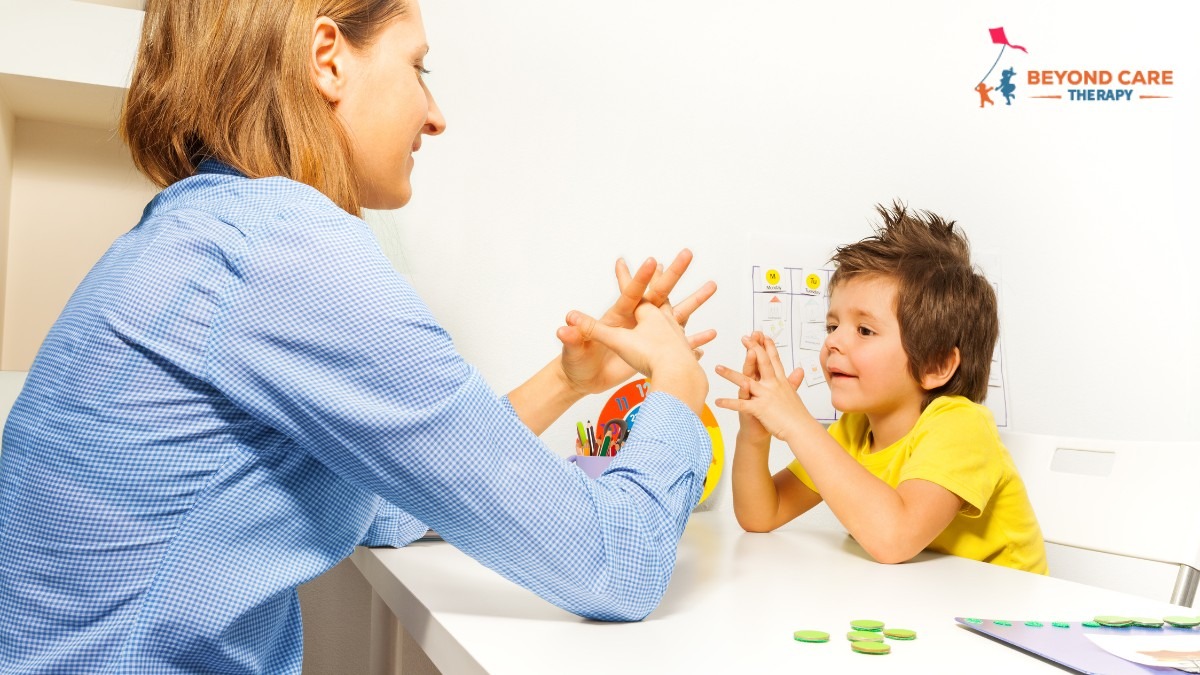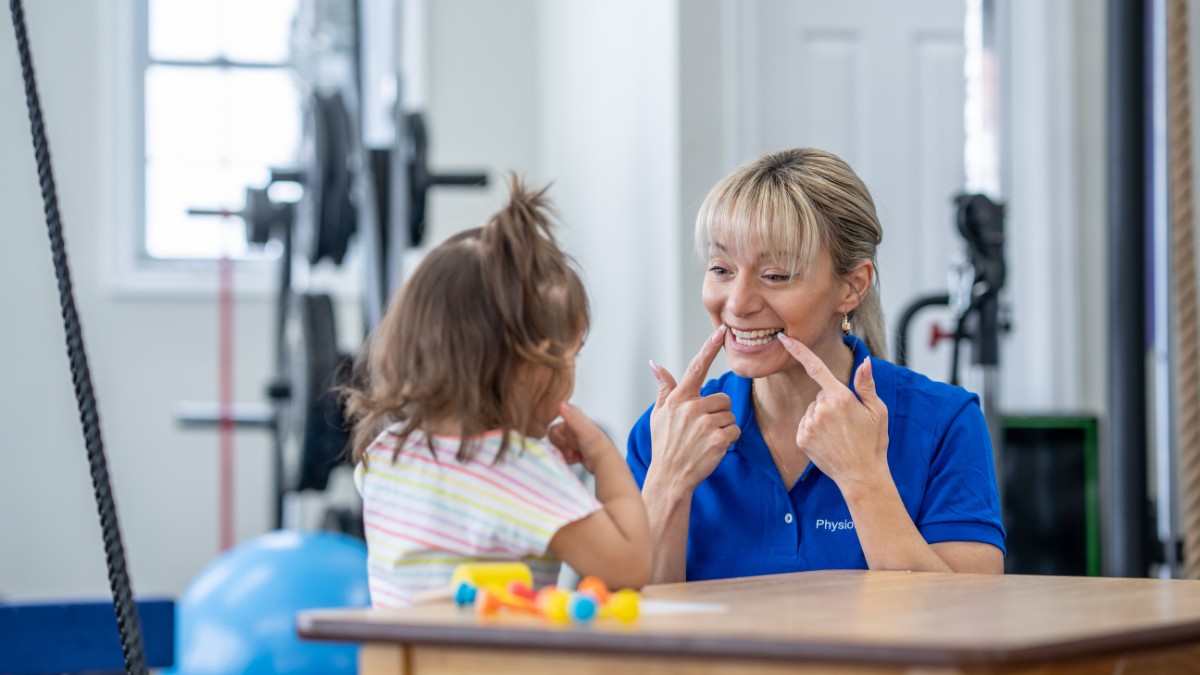Modeling is a fundamental technique in Applied Behavior Analysis (ABA) therapy, widely used to teach new skills by demonstrating desired behaviors for individuals to observe and imitate. Through modeling, therapists provide clear, visual examples of appropriate actions, reinforcing learning and promoting skill acquisition.
This technique is especially effective in working with individuals with autism and other developmental disorders, as it helps bridge the gap between observation and action. In this article, we will explore various examples of modeling in ABA therapy, discussing its techniques, benefits, and practical applications for enhancing learning and behavior.
What Is Modeling in ABA Therapy?
Modeling in ABA therapy involves demonstrating a desired behavior to encourage individuals to imitate it. This technique helps teach new skills or reinforce existing ones by showing how the behavior is performed.
Modeling is especially effective for children with autism, as it provides clear, observable examples that simplify the learning process.
By incorporating modeling into therapy sessions, ABA practitioners help individuals learn complex behaviors in a structured and systematic way. This method aligns with the core principles of ABA—breaking tasks into smaller steps and using reinforcement to build and sustain new skills.
Why Is Modeling Important in ABA Therapy?
Modeling plays a critical role in ABA therapy because many children with autism or developmental delays learn best through visual and direct observation. Instead of abstract explanations, they benefit from concrete examples of the behavior they are expected to emulate.
Here are some reasons why modeling is essential:
- Enhances Imitation Skills: For children with developmental challenges, learning to imitate others is a foundational step that leads to more advanced skills.
- Encourages Social Interaction: Social behaviors, such as making eye contact or initiating greetings, can be demonstrated through modeling to promote better peer engagement.
- Improves Generalization: With consistent practice, modeled behaviors are more likely to generalize across settings, people, and situations.
Types of Modeling in ABA Therapy
ABA therapy uses different types of modeling to cater to individual learning needs. Each approach provides unique benefits:
Live Modeling
In live modeling, the therapist or another person demonstrates the desired behavior in real time. The child observes and then practices the behavior under supervision.
For example, a therapist shows a child how to properly use a fork during mealtime, or a peer demonstrates taking turns during a group activity.
Video Modeling
Video modeling involves recording someone performing the desired behavior and showing the video to the learner. This method is particularly effective for children who learn best visually and can replay the video multiple times.
Examples include watching a video of someone tying their shoes step by step or observing a recorded conversation to learn how to greet others appropriately.
Peer Modeling
Peer modeling leverages the influence of similarly-aged peers to encourage learning. Children often feel more motivated to imitate peers, making this method especially useful in group settings.
Example scenarios include a peer demonstrating raising their hand to answer a question in class or another child showing how to play with a toy appropriately.
Self-Modeling
Self-modeling involves the learner watching videos of themselves successfully performing a skill. This boosts confidence and reinforces the behavior.
For instance, a child watches a video of themselves correctly brushing their teeth, encouraging repetition of the behavior.

How Is Modeling Used in ABA Therapy?
Modeling can be applied across various areas of skill development. Below are some examples:
Teaching Communication Skills
Modeling is often used to teach verbal and non-verbal communication. Therapists demonstrate behaviors like making requests, using gestures, or maintaining eye contact. For example, showing a child how to use a communication device to ask for help or modeling appropriate tone and volume during a conversation.
Promoting Social Skills
Social interactions can be challenging for children with autism. Modeling helps them learn essential social behaviors by providing clear examples. This can include demonstrating how to greet a friend or say goodbye, as well as showing how to take turns during a game or share toys.
Building Daily Living Skills
Daily routines often require a sequence of steps that can be hard to master. Modeling simplifies the process by breaking tasks into smaller, observable actions. This includes showing how to wash hands or tie shoelaces, and demonstrating how to organize a backpack for school.
Reducing Challenging Behaviors
Modeling can also help replace challenging behaviors with more appropriate alternatives. For instance, instead of yelling when upset, a child can learn to model calm breathing techniques.
Steps for Effective Modeling in ABA Therapy
To ensure modeling is effective, therapists follow a structured approach:
- Identify the Target Behavior: Clearly define the skill or behavior to be taught.
- Select the Appropriate Model: Choose whether live, video, peer, or self-modeling is most suitable.
- Demonstrate the Behavior: Provide a clear and concise demonstration of the behavior.
- Encourage Imitation: Prompt the learner to imitate the behavior and provide guidance if needed.
- Reinforce the Behavior: Offer positive reinforcement, such as praise or rewards, to encourage repetition.
- Monitor Progress: Track the learner’s performance and adjust strategies as necessary.
- Promote Generalization: Practice the skill in different settings and with different people to ensure it’s generalized.

Challenges and Solutions in Modeling for ABA Therapy
Common Challenges
- Lack of Engagement: Some children may struggle to focus on the model or lose interest.
- Difficulty Generalizing Skills: Behaviors learned through modeling might not transfer to other settings.
- Over-Reliance on Prompts: Learners may require additional guidance to initiate behaviors independently.
Practical Solutions
- Use engaging and age-appropriate materials to capture attention.
- Practice skills in various contexts to promote generalization.
- Gradually fade prompts to encourage independence.
Partner with Beyond Care Therapy
Modeling is an invaluable technique in ABA therapy, helping children develop essential skills and thrive in everyday life. At Beyond Care Therapy, we specialize in providing tailored ABA therapy programs, including effective modeling techniques, to support children and families.
Our team is dedicated to empowering individuals with autism to reach their full potential through evidence-based practices. If you’re in Utah, Texas, Arizona, and Massachusetts and seeking professional ABA therapy, contact us today to learn more about how we can help your child succeed!

